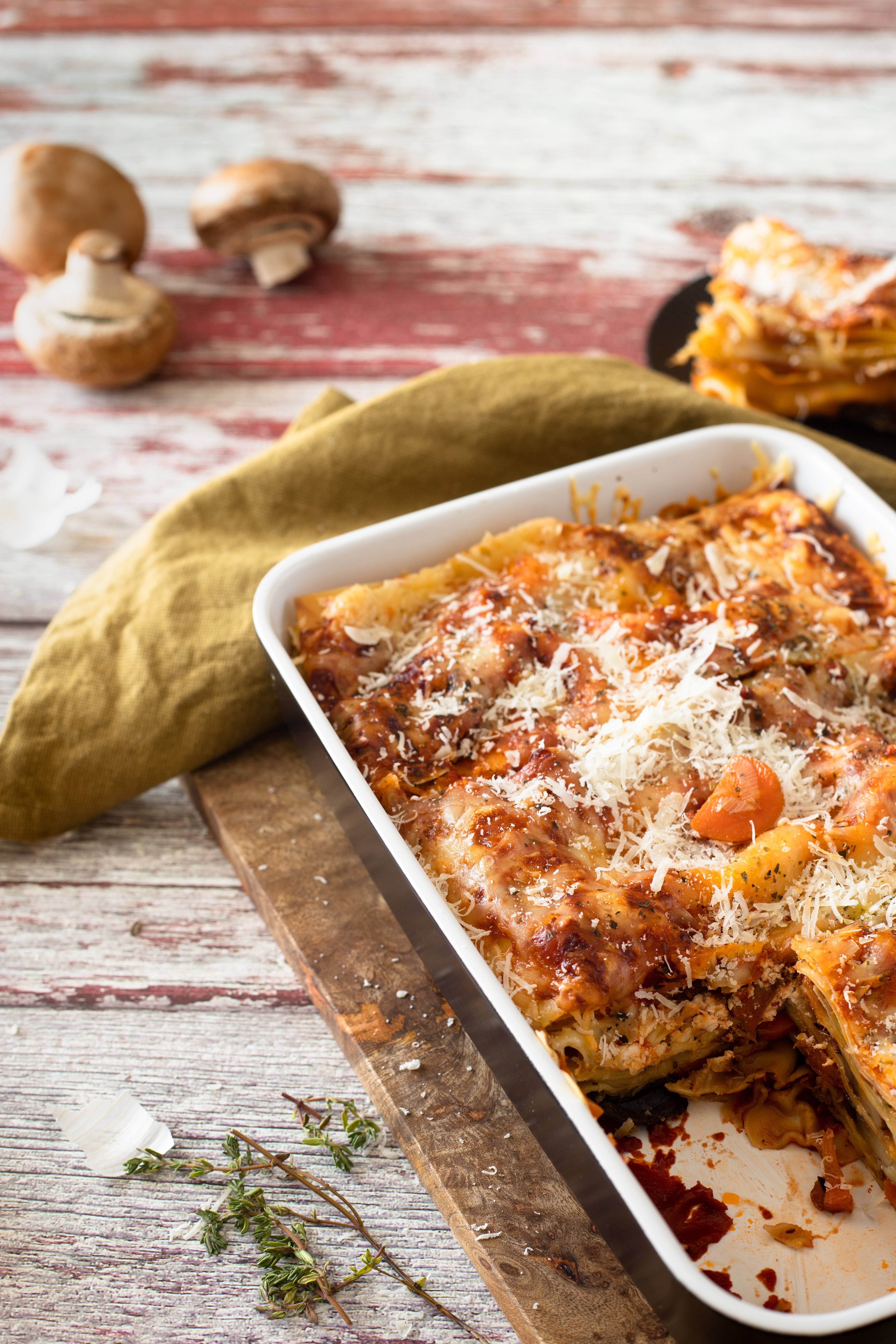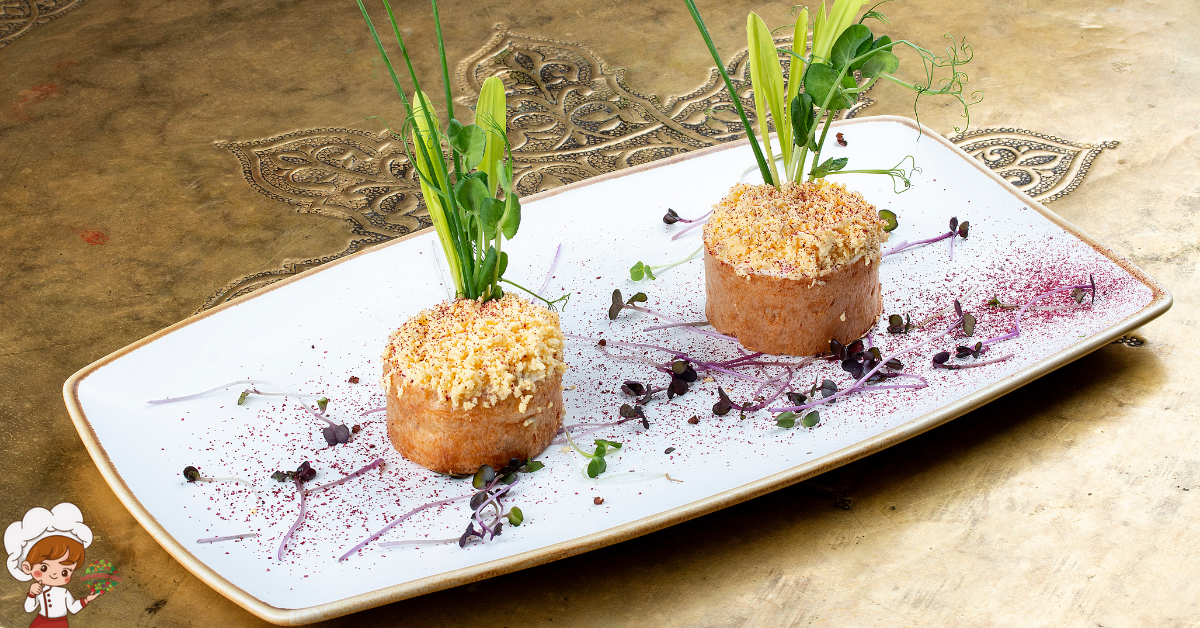The Rich Tapestry of Classic Lasagna

Layers of History: The Rich Tapestry of Classic Lasagna
Classic Lasagna, with its layers of pasta, rich meat sauce, and velvety cheese, is a culinary masterpiece that has stood the test of time. This iconic Italian dish, celebrated worldwide, has a fascinating history woven into the cultural fabric of Italy. Join us as we explore the origins, evolution, and enduring charm of this beloved comfort food.
Origins in Ancient Rome: Unveiling the Roots of “Laganum”
The captivating journey of lasagna begins in the illustrious culinary history of ancient Rome, where the earliest incarnation of the dish was known as “laganum.” In the bustling kitchens of Roman households, chefs crafted a precursor to what we now recognize as lasagna, laying down the foundation for a culinary legacy that would span centuries.
“Laganum” was a humble dish, composed of delicate layers of pasta, akin to the lasagna noodles we savor today. However, in its earliest form, it lacked the intricate interplay of flavors that characterize modern lasagna. The pasta sheets were a canvas for various sauces, but the dish had yet to embrace the hearty amalgamation of meats, cheeses, and robust flavors that would later define it.
In the tapestry of ancient Roman cuisine, “laganum” held a unique place. The art of layering pasta sheets hinted at the culinary ingenuity that would unfold in the centuries to come. While this early version may not have boasted the rich, savory notes we associate with lasagna today, it laid the groundwork for an evolution that would see it transform into one of Italy’s most celebrated culinary creations.
As we delve into the origins of lasagna in ancient Rome, we uncover not only a simple dish enjoyed by the Romans but also the first brushstrokes of what would become a gastronomic masterpiece. From the ancient kitchens where “laganum” was first prepared to the bustling trattorias where lasagna is lovingly crafted today, the journey of this dish reflects the enduring appeal of culinary traditions passed down through generations. Join us as we peel back the layers of time to explore the fascinating beginnings of lasagna, where each sheet of pasta tells a story of innovation and culinary artistry in ancient Rome.
Medieval Italy: The Renaissance of Classic Lasagna
As we transition through the annals of time, our gastronomic exploration leads us to the captivating era of medieval Italy, where lasagna underwent a transformative journey, emerging as a centerpiece of culinary artistry. During this period, the dish evolved from its modest origins, weaving itself into the rich tapestry of Italian cuisine.
In medieval Italy, lasagna became synonymous with opulence and extravagance, gracing the tables of nobility and aristocracy. The pasta sheets, once a simple canvas for sauces, now embraced luxurious fillings and intricate layers, elevating the dish to new heights. The evolution of lasagna mirrored the broader cultural and artistic renaissance of the time, as chefs sought to create culinary masterpieces that captivated both the palate and the eye.
Lasagna’s ascent during this period was not only marked by its refined preparation but also by the diversity of ingredients incorporated into its layers. Meats, cheeses, and vibrant herbs became integral components, giving birth to the rich and flavorful profile that characterizes modern lasagna. As the dish gained popularity across Italy, regional variations emerged, each contributing to the unique mosaic of lasagna traditions.
Beyond the aristocratic halls, lasagna found its way into the heart of Italian homes. The versatility of the dish allowed families to adapt it to their own tastes and the ingredients available to them. Whether enjoyed by royalty or commoners, lasagna in medieval Italy became a symbol of culinary sophistication and a testament to the evolving craft of Italian chefs.
In our culinary journey through medieval Italy, we witness the blossoming of lasagna into a dish that transcends social boundaries, embracing both the elite and the everyday. The evolution of lasagna during this period not only reflects the changing landscape of Italian cuisine but also highlights the enduring allure of a dish that has stood the test of time. Join us as we uncover the layers of lasagna’s evolution, each one adding a chapter to its storied history.
Renaissance Italy: Classic Lasagna Takes Center Stage
During the Renaissance, lasagna secured its place as a centerpiece on Italian tables. Cookbooks from the period featured elaborate lasagna recipes, often served at banquets and festive occasions. The dish became a symbol of abundance and celebration.
Regional Variations: From North to South
Italy’s diverse regions embraced lasagna, each putting its unique twist on the classic. In the north, creamy béchamel sauce found its way into the recipe, creating a distinct variation. In the south, where tomatoes thrived, the meat sauce evolved into a rich, tomato-based ragù.

Lasagna
Ingredients
- 1 pound 450g ground beef
- 1 pound 450g Italian sausage, casing removed
- 1 onion finely chopped
- 3 cloves garlic minced
- 2 cans 28 ounces each crushed tomatoes
- 2 cans 6 ounces each tomato paste
- 1/2 cup red wine optional
- 2 tablespoons olive oil
- 2 teaspoons dried oregano
- 2 teaspoons dried basil
- Salt and black pepper to taste
- 12 lasagna noodles cooked al dente
- 4 cups ricotta cheese
- 1 large egg
- 3 cups shredded mozzarella cheese
- 1 cup grated Parmesan cheese
- Fresh basil or parsley for garnish
Instructions
- Prepare the Meat Sauce:
- In a large pot, heat olive oil over medium heat. Add chopped onions and garlic, sauté until softened.
- Add ground beef and Italian sausage to the pot, breaking them apart with a spoon and browning until cooked through.
- Pour in crushed tomatoes and tomato paste. Add red wine if using. Stir in oregano, basil, salt, and pepper. Simmer for at least 30 minutes, allowing the flavors to meld.
- Prepare the Ricotta Mixture:
- In a bowl, combine ricotta cheese with a beaten egg. Mix well until smooth.
- Cook the Lasagna Noodles:
- Bring a large pot of salted water to a boil. Cook the lasagna noodles according to the package instructions. Drain and set aside.
- Assemble the Lasagna:
- Preheat the oven to 375°F (190°C).
- In a large baking dish, spread a thin layer of meat sauce. Place a layer of cooked lasagna noodles on top.
- Spread a third of the ricotta mixture over the noodles, followed by a layer of mozzarella and Parmesan cheese.
- Repeat the layers, finishing with a generous layer of meat sauce and a topping of mozzarella and Parmesan cheese.
- Bake:
- Cover the baking dish with aluminum foil and bake in the preheated oven for 25-30 minutes.
- Remove the foil and bake for an additional 10-15 minutes or until the cheese is golden and bubbly.
- Serve:
- Allow the lasagna to cool for a few minutes before slicing.
- Garnish with fresh basil or parsley, and serve this classic Italian lasagna with a side salad or garlic bread.
Classic Lasagna in the Modern Era: Global Delight
With the mass migration of Italians in the 19th and 20th centuries, lasagna traveled across oceans, finding its way to different corners of the world. Embraced by diverse cultures, it became a cherished comfort food in countless households.
Conclusion:
As we savor the layers of lasagna today, we connect not only with the flavors but also with a rich history that spans centuries. From the simple laganum of ancient Rome to the elaborate creations of Renaissance banquets, lasagna remains a testament to the enduring allure of traditional Italian cuisine. Whether enjoyed in a rustic kitchen in Tuscany or a bustling restaurant in New York City, lasagna continues to be a symbol of warmth, love, and the joy of shared meals. Join us in celebrating this timeless classic that transcends borders and brings people together one delicious layer at a time.








